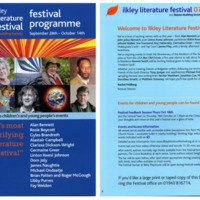
Ilkley Literature Festival, 2007
A number of events to mark the bicentenary of the Abolition Act of 1807 took place as part of Ilkley Literature Festival in 2007. Authors Caryl Phillips and Ben Okri discussed their work, and writers from the Peepal Tree Press Freedom Project premiered their poetry. 2007 Poet in Residence Rommi Smith invited festival goers to help create a unique literary 'Freedom Quilt', and gave a multi-media performance drawing on her recent visit to the Gambia. Street theatre was provided by performances of Sugar Beat Skank by Regeyshun Dance and the Leeds Bi-centenary Transformation Project. Members of the Leeds Diasporian Stories Research Group shared new material uncovered in the course of their research into the links between Yorkshire and the Atlantic trading world, and actor Joe Williams performed and answered questions as the African abolitionist Olaudah Equiano.
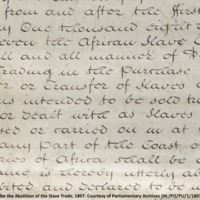
1807: Blake, Slavery and the Radical Mind
A special display at Tate Britain to mark the bicentenary focused on William Blake and the circle of radical writers and artists associated with the publisher Joseph Johnson in the 1790s and 1800s. Blake's poetry and art protested against mental, physical and economic enslavement and inspired generations of artists, writers and political dissenters. The display was accompanied by a variety of events, including talks, performances and music for adults, families and young people and schools.
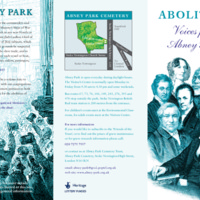
Abolition Voices from Abney Park
Abney Park is a non-denominational cemetery in Stoke Newington, London. The walking tour Abolition Voices from Abney Park was developed to highlight the individuals connected with the abolition of slavery buried there, including the Baptist missionary Reverend Thomas Burchill (associated with Samuel Sharpe and the 'Baptist War' in Jamaica), Reverend Newman Hall and Reverend James Sherman (both associated with abolition in the USA). The grave of Joanna Vassa, daughter of Olaudah Equiano, was identified and restored. The monument to Joanna Vassa was designated Grade II listing by Historic England in 2008 as part of the bicentenary commemorations. There were accompanying talks and school workshops. Abney Park Cemetery Trust was also responsible for the carving of a new memorial stone for the writer Eric Walrond.
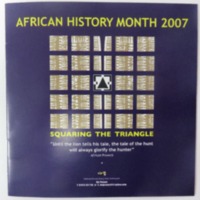
African History Month 2007: Squaring the Triangle
Squaring the Triangle was the theme of African History Month 2007 in Suffolk. The programme was co-ordinated by the Nia Project (a cultural, arts and heritage project) and explored the history and legacy of slavery through film, literature, exhibition, music and debate. The theme of Squaring the Triangle was underpinned by the African proverb, ‘Until the Lion tells his tale the tale of the hunt will always glorify the hunter’. Highlights included the Nia Memorial Lecture, given by the producer-director Pam Solomon-Fraser. Nubian Films short season looked at the current legacy of slavery and the Diaspora of African peoples. Talks, workshops and debates covered issues such as reparations, retribution, resistance, and educational guidelines for parents on how to discuss the African slave trade with children. Special recognition was given in the programme to Ghana’s 50th anniversary as an independent state. There were heritage walks around Ipswich to uncover some of the cultural connections with Africa, the Caribbean and Suffolk. A Youth Day Conference hosted by the Zimbabwe Youth brought together young people from the community to use music and poetry to explore their ideas on the legacy of the slave trade. Historian Maureen James and representatives from Suffolk County Council led pupils from local schools in researching the anti-slavery movements, with particular reference to the Clarkson family.
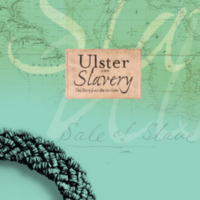
Hidden Connections: Ulster and Slavery 1807-2007
The Hidden Connections exhibition was a result of partnership between the Public Record Office of Northern Ireland (PRONI) and the Linen Hall Library in Belfast. The exhibition explored Ulster's links with slavery after 1807 via people, events and places, and looked at both the pro and anti-slavery debates in Northern Ireland. It drew on documents from PRONI’s archives, artefacts from the Ulster Museum and contemporary books and pamphlets from the Linen Hall Library and elsewhere. After its launch at Linen Hall Library, the exhibition toured Northern Ireland, travelling to Down Museum, the Harbour Museum in Derry, Lisburn City Library and the Ulster American Folk Park.
The wider Hidden Connections programme featured workshops exploring archival sources, performances and lectures by leading scholars. There was a panel discussion on ‘Slavery Now’, a walking tour of Belfast sites associated with the slavery issue, and a boat trip on the Lagan focusing on the port’s links with slave colonies. Gerry McLaughlin’s ‘Blood sugar’ is a drama documentary devoted to the literature of slavery, music and song. 'Freedom and Liberty' was the theme of the UK-wide Archives Awareness Event. PRONI organised special events and produced a catalogue, 'Ulster and Slavery', listing the references to slavery to be found in the archive.
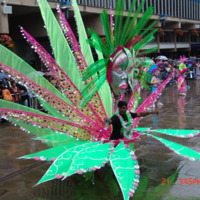
A Guide to Events in Derbyshire
A bicentenary brochure detailing some of the arts and non-arts activities held in Derby throughout 2007 to mark the bicentenary involving schools, community groups and other organisations. These included performances from the University of Derby's Student's Union, a debate at Derby City Council House, and a presentation of archive material from BBC Radio Derby's African Caribbean Show. The Freedom Showcase featured nine performers and writers from Leicester, Nottingham and Derby sharing their personal visions of 'Freedom' through a variety of spoken styles, from poetry, to rap and monologues. The costumes on display at Derby's Caribbean Carnival in July 2007 depicted positive images of the enslaved surviving and resisting slavery. Derby West Indian Community Association led a performance of dance and drama to depict slavery and its impact on young people, and a school project around the theme of slavery. Creative Thought was part of a Renaissance East Midlands funded Community Learning initiative. Working with an artist, participants explored the concept of slavery and its links to Derby's industrial heritage using The Silk Mill as inspiration. Tactile objects were created to share understanding about links with slavery.
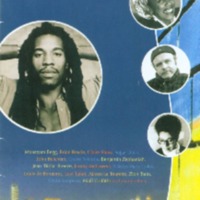
WOW2007
In 2007 Liverpool's annual Writing on the Wall arts festival explored the legacy of slavery through words, music, lyrics, song, dance and discussion. Authors, campaigners and social commentators explored the themes of the bicentenary and Liverpool's 800th birthday. The festival aimed to celebrate diversity and promote inter-cultural tolerance. Speakers included one of the nine Britons detained in Guantanamo, Cuba. Among the performers was dub poet Benjamin Zephaniah joined by Jean 'Binta' Breeze and Levi Tafari, and featuring the MDI African Dancers for an 'extravaganza of rhythm and rhyme' at the Royal Philharmonic Hall. Liverpool Young Writers was launched by Writing on the Wall in 2007. Members have recently performed at Slavery Remembrance Day and the International Slavery Museum.
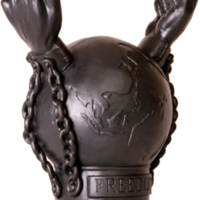
Abolition of the Slave Trade Act Commemorative Exhibitions
Nottingham Castle Museum held two exhibitions in 2007. Inspired by the anti-slavery medallion produced by Josiah Wedgwood in the 1790s, a group of young people from Nottingham’s African Caribbean community worked with artist Katherine Morling to explore issues surrounding slavery and the representation of black people in art. The group worked under the name Sankofa. The ceramic Globe of Freedom was fired at the Wedgwood factory in Staffordshire, and was displayed at Nottingham Castle Museum alongside the Wedgwood medallion. The word ‘FREEDOM’ is impressed on one side and ‘EQUALITY’ impressed on the other. A replica sculpture is still used as part of a handling collection loaned to schools and community groups in the Nottingham region. A second exhibition, in collaboration with the Open University in the East Midlands, looked at the British slave trade using slave narratives, telling the story of three survivors of slavery: Mary Prince, Robert Wedderburn and Quobna Ottobah Cugoano.
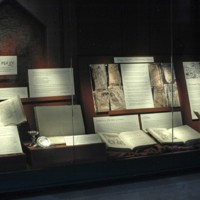
Distorted Image
Inspired by the bicentenary, the Distorted Image exhibition at Hereford Cathedral explored how distorted perceptions throughout history have resulted in prejudice, discrimination and enslavement. Incomplete or misleading images of human beings, who are black or female or in some way considered 'other', have resulted in unjust behaviour against them, particularly in the case of restricted legal and political rights. Alongside the example of slavery, this exhibition also looked at the invariably inferior position of women within church teaching. Distorted Image was part of the ongoing Mappa Mundi and Chained Library exhibition. The Hereford Mappa Mundi is a 13th century map featuring drawings of the history of humankind and the natural world, which records how medieval scholars interpreted the world in spiritual as well as geographical terms.
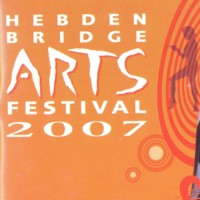
Hebden Bridge Arts Festival 2007
Hebden Bridge Arts Festival commemorated the bicentenary of the Abolition of the Slave Trade in 2007 in performances and exhibitions, and extending out from that, to a celebration of the idea of freedom. Events linked to the consideration of freedom had a broken chain as an identifying symbol in the festival brochure. Highlights included the world premiere of 'Can't Chain Up Me Mind' by the Grand Union Orchestra, a celebration of jazz and emancipation.